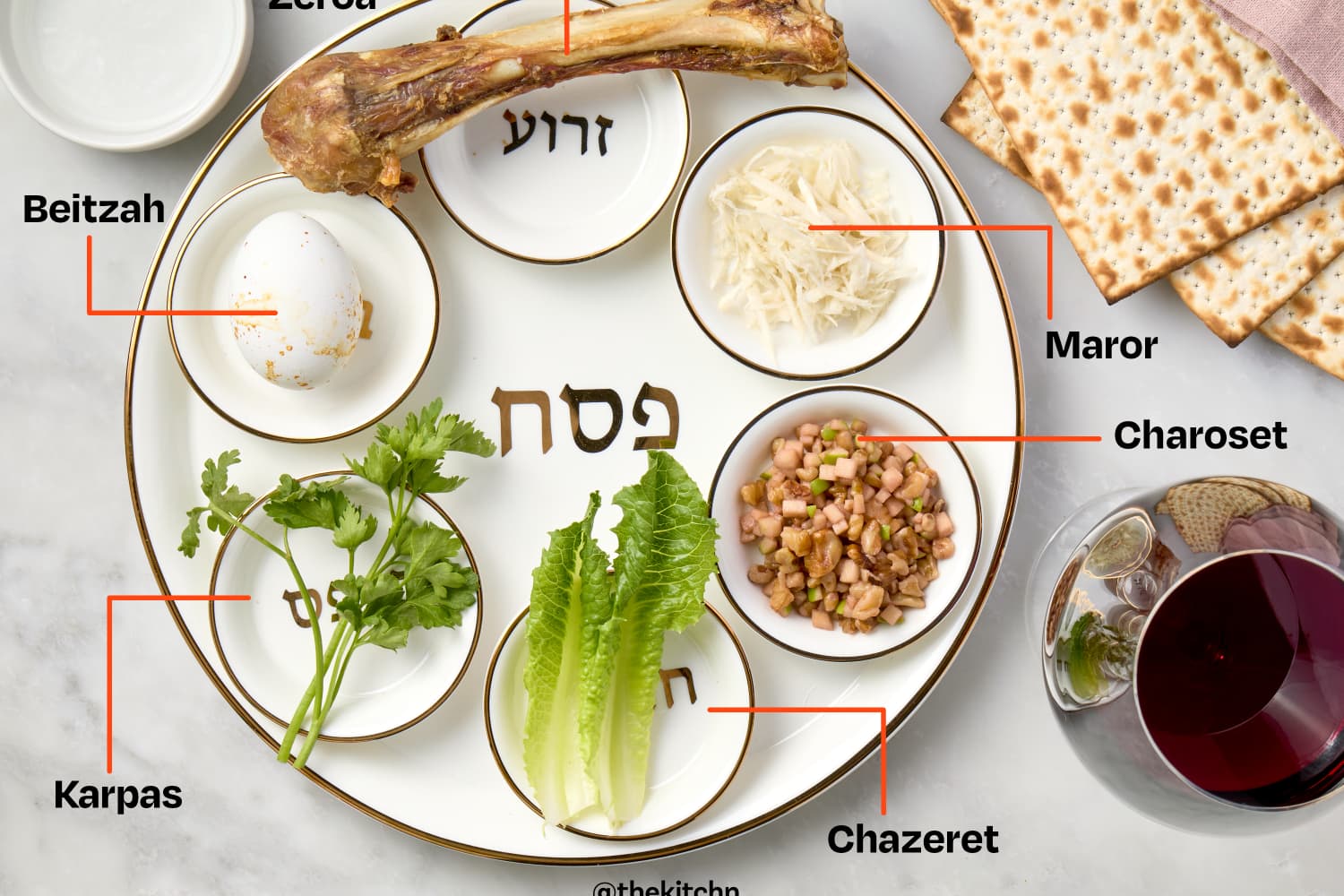Passover is a sacred holiday for Jewish people. For seven to eight days, observants commemorate the Exodus from Egypt through various customs and rituals, from eating meals to attending special religious services. A crucial part of the Passover celebration is the Seder meal, which features the Passover Seder plate. But what exactly is this plate, and what do its six elements represent? Before we dive in, let’s talk a little bit more about the Seder itself.
A Seder meal is a ceremonial dinner that happens during the first night or two of Passover. A Passover Seder meal incorporates rituals, completed in a specific order, that retell the story of the Exodus from Egypt and address themes of freedom and gratitude. Friends and family gather in one’s home to pray, tell stories of Passover, eat delicious food (including dessert), and more. This year, Passover will start the evening of April 22.
What Does the Passover Seder Plate represent?
The Seder plate is the most important part of any Passover Seder. Specific foods representing different parts of the Exodus story are placed on the Passover Seder plate. It’s what the holiday ritual is centered around and is rich with symbolism, meaning, and history.
While there are plenty of new, modern twists or additions, there are traditionally six main items that go on the Passover Seder plate. (Fun fact: Many Seder plate designs configure the six items into the six points of the Star of David.) How the Seder plate is arranged differs by families and their interpretations; the setup above is one common option. Below, learn more about the six elements of the Seder plate.
This is the bitter herb, which reminds the Jews of the bitterness of the slavery their forefathers endured in Egypt. It’s usually represented on Seder plates with horseradish. You can use part of a full root or spoon out some of the jarred stuff.
How it’s used: The maror may be used a few times during the Seder. First, it gets dipped or mixed into some charoset (more on that below). It’s sometimes also made into a small sandwich with charoset and matzo, called a Hillel sandwich.
Usually a roasted lamb shank bone, the zeroa (also spelled z’roa or zeroah) is just for show to represent the lamb that was sacrificed the night the Jews left Egypt. (Some communities use a roasted chicken neck instead.) The word zeroa means arm, and people often say this item also symbolizes the outstretched arm of God.
How it’s used: The shank bone is not eaten (it’s a bone, after all!), but it is used symbolically.
The charoset is meant to resemble the mortar and brick made by the Jews when they were slaves in Egypt under Pharaoh. Some communities of Ashkenazi Jews make it with apples, walnuts, and wine, while Sephardic Jews often use figs and dates.
How it’s used: Charoset is eaten with horseradish and, during some Seders, it’s turned into the Hillel sandwich, put between two pieces of matzo with the maror.
A second bitter item, which is sometimes left off the Seder plate entirely, romaine lettuce symbolizes the fact that the Jewish stay in Egypt began soft and ended hard and bitter (look at the two ends of a piece of lettuce).
How it’s used: Some families do use the chazeret and the maror interchangeably or together. Sometimes the chazeret is also used in the Hillel sandwich.
Typically represented with parsley (although some families use boiled potatoes), the karpas is a symbol of spring and new beginnings. It can also symbolize the initial flourishing of the Israelites during their first years in Egypt.
How it’s used: To start the Seder, participants take a small piece of parsley and dip it in salt water before eating it to remember the tears the Jews shed when they were enslaved in Egypt.
There are many different explanations for why a roasted hard-boiled egg sits on the Seder plate. Some families say it represents the pre-holiday offering. It’s also said that the roundness of the egg represents the cycle of life. Others say it represents new beginnings and hope.
How it’s used: Although it’s traditional to begin the actual Passover Seder meal with each person eating a hardboiled egg that’s dipped in the bowl of salt water, the egg on the Seder plate is typically not eaten.
Gorgeous Passover Seder Plates for Your Celebration
Other Takes on the Passover Seder Plate
Rabbi Josh Franklin of Temple Beth Elohim in Wellesley, Massachusetts, was consulted during the research of this article.
